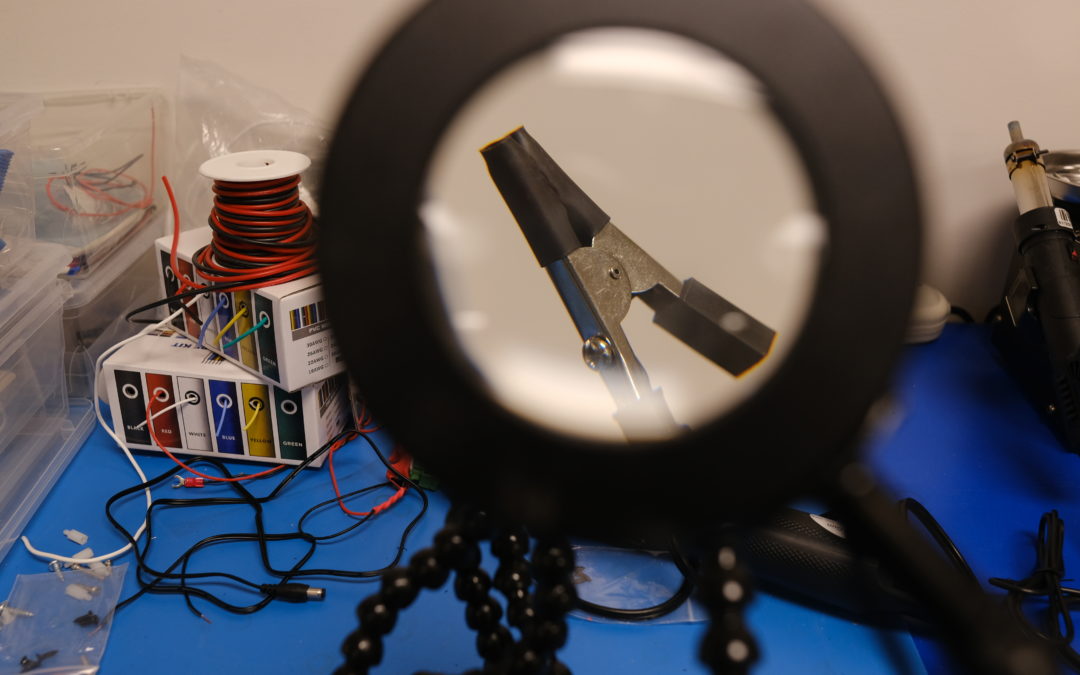Location, location, location.
The phrase usually applies to real estate investment, but it can also apply to Research and Development. What we mean here is that some locations can be more conducive to R&D work than others. In the case of the InDro Robotics R&D facility located in Ottawa’s technology incubator known as Area X.O – we believe we’ve found the perfect fit.
What is Area X.O?
Good question. We’ll let its website provide the answer in this quote:
“Area X.O is the futureplex of innovation and collaboration. Our state-of-the-art facility offers a safe and secure environment to create, test and demonstrate future mobility, autonomy and connected technologies. Any innovation. Any application. Any sector… from transportation and telecom to smart agriculture, defence, aerospace, public safety, and smart cities. Evolving from the Ottawa L5 Connected and Autonomous Vehicle (CAV) Facility, Area X.O is proudly established and led by Invest Ottawa. We passionately pursue our vision: to unleash and realize the potential, power and impact of visionary technologies to improve our world and human lives.”
Given that InDro Robotics specializes in R&D involving drones and Uncrewed Ground Vehicles (UGV) – and in remotely teleoperating both kinds of vehicles – you can see why this is a good fit. We’ve also long had a commitment to positive use-cases, working closely with a number of First Responders across the country and researchers and clients around the world. Area X.O is a perfect place to get this kind of work done. And, as you’ll see in the image below, there’s never a shortage of autonomous vehicles of one kind or another around this place:
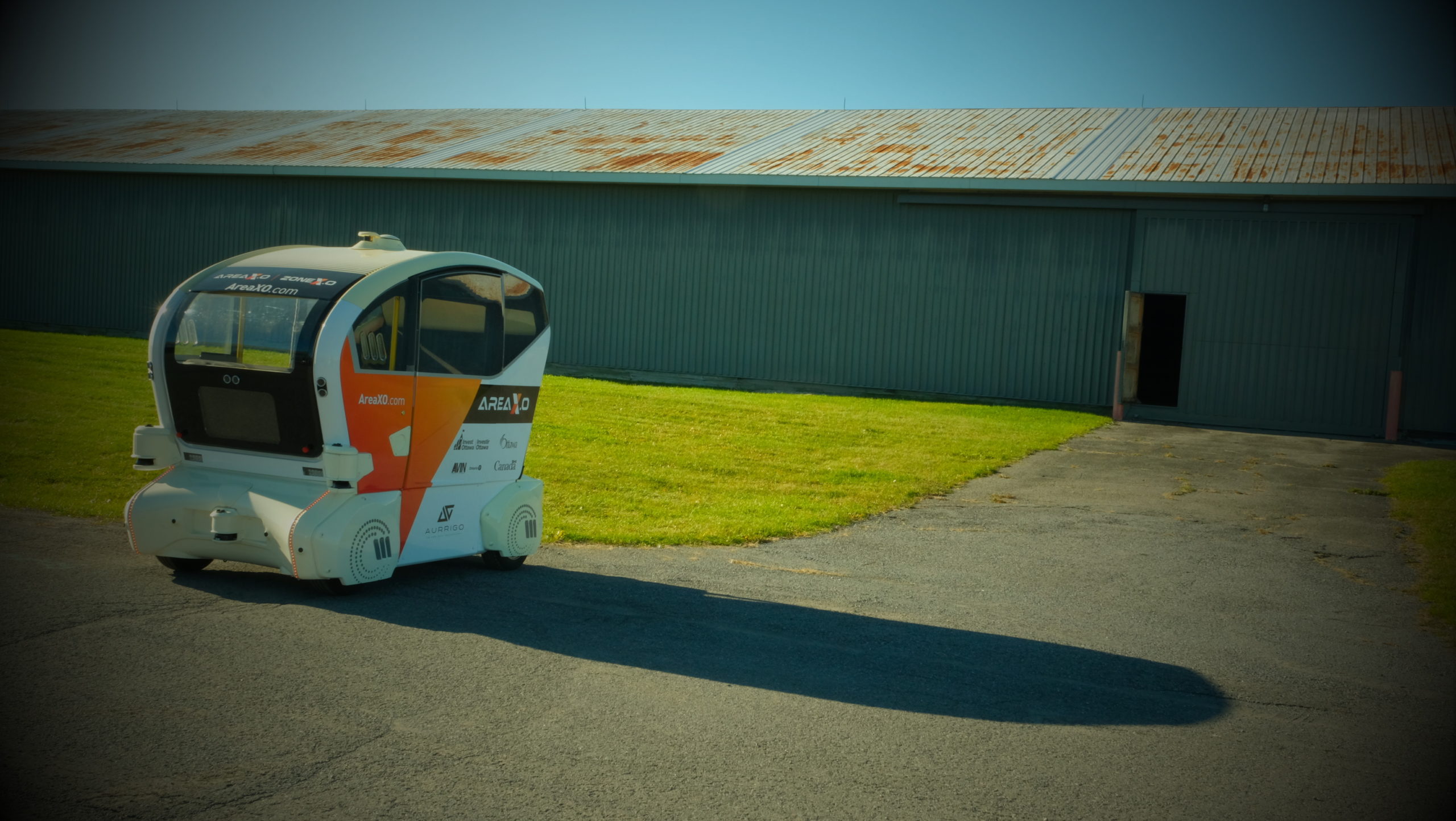
A giant laboratory
That’s key here. While our office is great (and you’ll see that shortly), it’s the location that counts. Area X.O is a restricted facility covering a huge space: 750 hectares (or about 850 acres), offering a 16-kilometre test track perfect for testing autonomous vehicles and urban mobility. There are even traffic lights for these robots.
When you can open the back door and simply drive your robots outside for testing, that’s a huge advantage. Here’s InDro CEO Philip Reece:
“The access to a site so close to the city, which has cutting-edge connectivity including 5G and microwave communications, test tracks with simulated city infrastructure – not to mention our lab, where we literally roll our latest equipment out of the hangar and launch it into the air or send it off into the smart farm – is perfect for R&D. This allows us to develop and test our leading-edge technology so much faster.”
It’s a point echoed by Arron Griffiths, InDro’s engineering manager.
“AREA X.O is an ideal incubation environment,” he says. “It allows you enough space to both create things in an office and then take them directly outside and test them with zero logistics involved. I’ve worked at business parks and academic facilities, and going from a laboratory to real-world – there’s always a hurdle there, there’s always been a road-blocker. Here, I can take a robot out the backdoor and start testing in seconds. It’s its own little robotic ecosystem a stone’s throw away from the capital, which I’m sure is very intentional.”
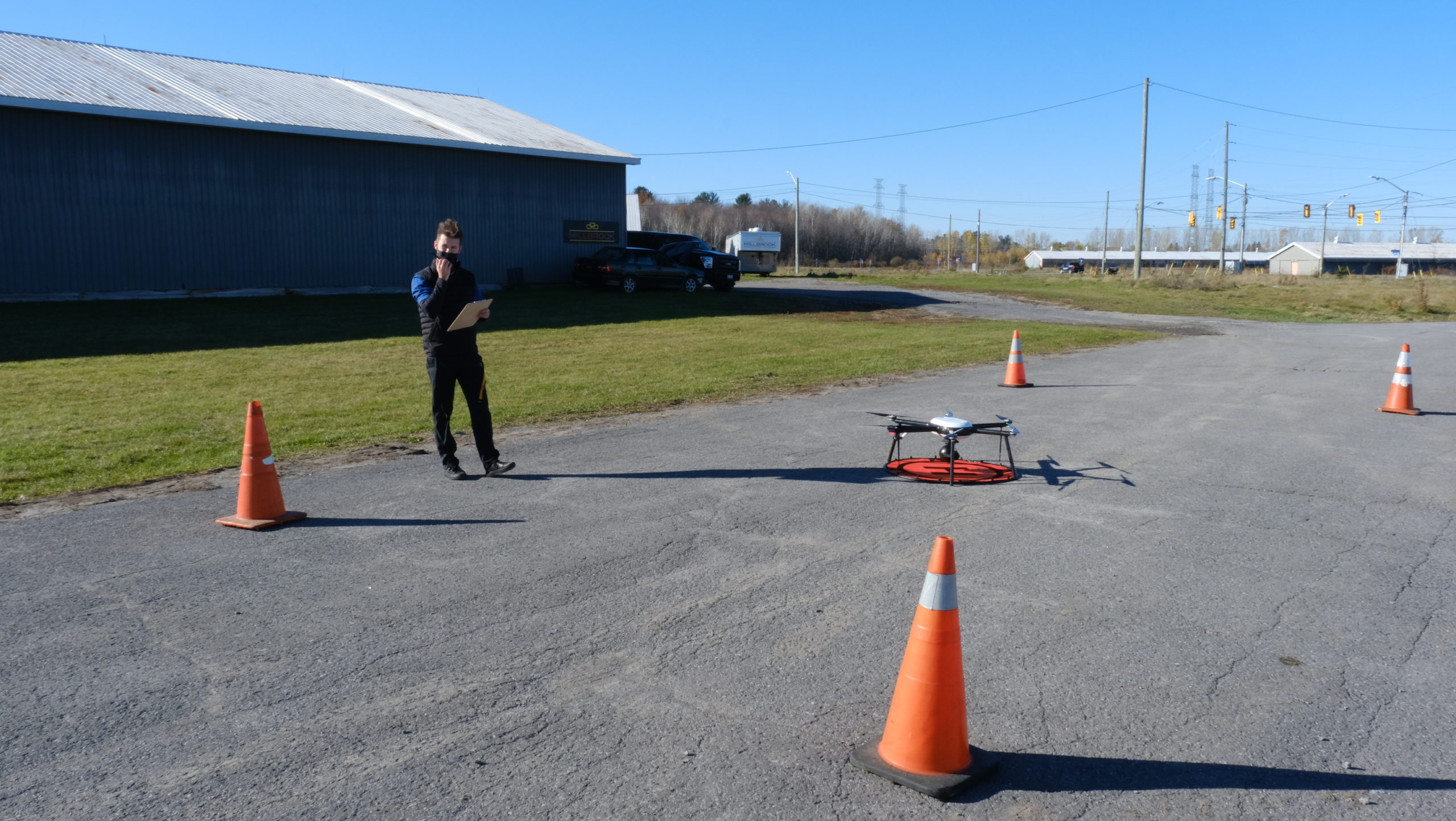
More than a test-bed
While the infrastructure is impressive, and testing the latest drone or UGV is literally a short walk away, it takes more than location to build a successful R&D facility. It takes a team. And there’s a striking collection of talent in this growing InDro location, including six engineers, project managers, plus seasoned sales and support professionals. These people collaborate side-by-side. It’s the very definition of synergy.
They didn’t land there by accident. Finding people who were the right fit for an agile workplace was a key consideration in the hiring process.
“We’ve selected people based on culture fit as well as their technical know-how,” explains Griffiths. “We’re guided by the principle of collaboration and coherency in the group. We can’t have stubborn people, we can’t have ‘No’ people, because it really bogs us down in development and collaboration within a team.
“Retention of good talent is ultimately the success of any given company. So I’m trying to build the culture that I want here so that we’re all happy and productive and successful. Because happy people work, and they work their asses off.”
(If you want to see what happy people working look like, check out the photo below. You’ll meet both Luke Corbeth [L] and Anthony Guolla, seen here in the Mobile Command Centre, shortly.)

“We do have an awesome team,” explains Peter King, InDro’s Head of Robotic Solutions. “Company culture is important.”
Peter plays key roles in business development and project management for InDro. In conjunction with Arron, he runs the Ottawa facility – and has an ideal background for the job(s). With an Economics degree, Peter worked for years at drone pioneer Aeryon Labs (now FLIR) as Director of Public Safety. He moved on to work with Uncrewed Ground Vehicles at ClearPath Robotics. Working at InDro has allowed him to maximize on that background.
“It gave me the opportunity to see the complete synergy between drones and ground vehicles,” says Peter. “And InDro became such a great fit because now I can focus on both at the same time.”
As of November of 2021, Peter has been with InDro for one year. Like pretty much everyone at this company, he gets real satisfaction seeing technology developed by the firm.
“We’re a Research & Development organization first; we love to tackle new and existing problems,” he explains. “We also have a solid process to allow clients to jump into the technology without a significant capital expenditure upfront.”
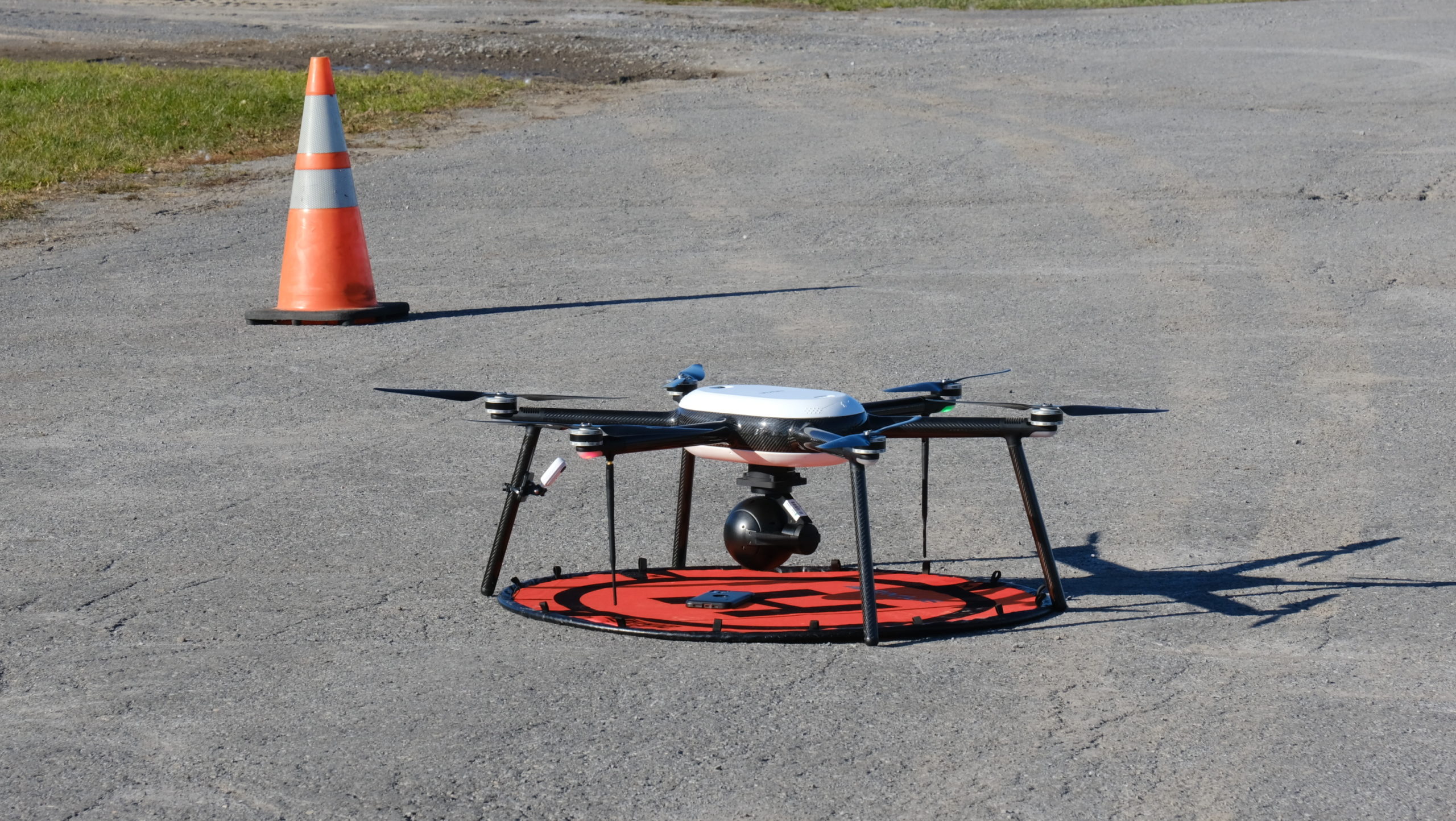
The R&D mission…
That’s one of the key things to know about InDro Robotics: At its core, it’s a Research and Development company. Yes, InDro does offer UAV and UGV services directly to customers, along with high-level training. Yes, the firm has carried out groundbreaking trials such as delivering Automated External Defibrillators or simulated blood products by drone. But there’s a strong emphasis on developing new core technologies either directly for a client, or on identifying ways to do things better. Once those opportunities or technology gaps have been identified, InDro then conceives, develops, tests – and ultimately sells – a solution.
“We may not ever become the company that has the most deployment of robots,” says Peter King, “but we play a big part in expanding the industry as a whole.”
For an example, look no further than InDro’s ROS-IN-A-BOX, a bolt-on system that turns a UGV platform into a fully functioning robot without all the usual hassle. (We won’t get into explaining it here, but do recommend this story.)
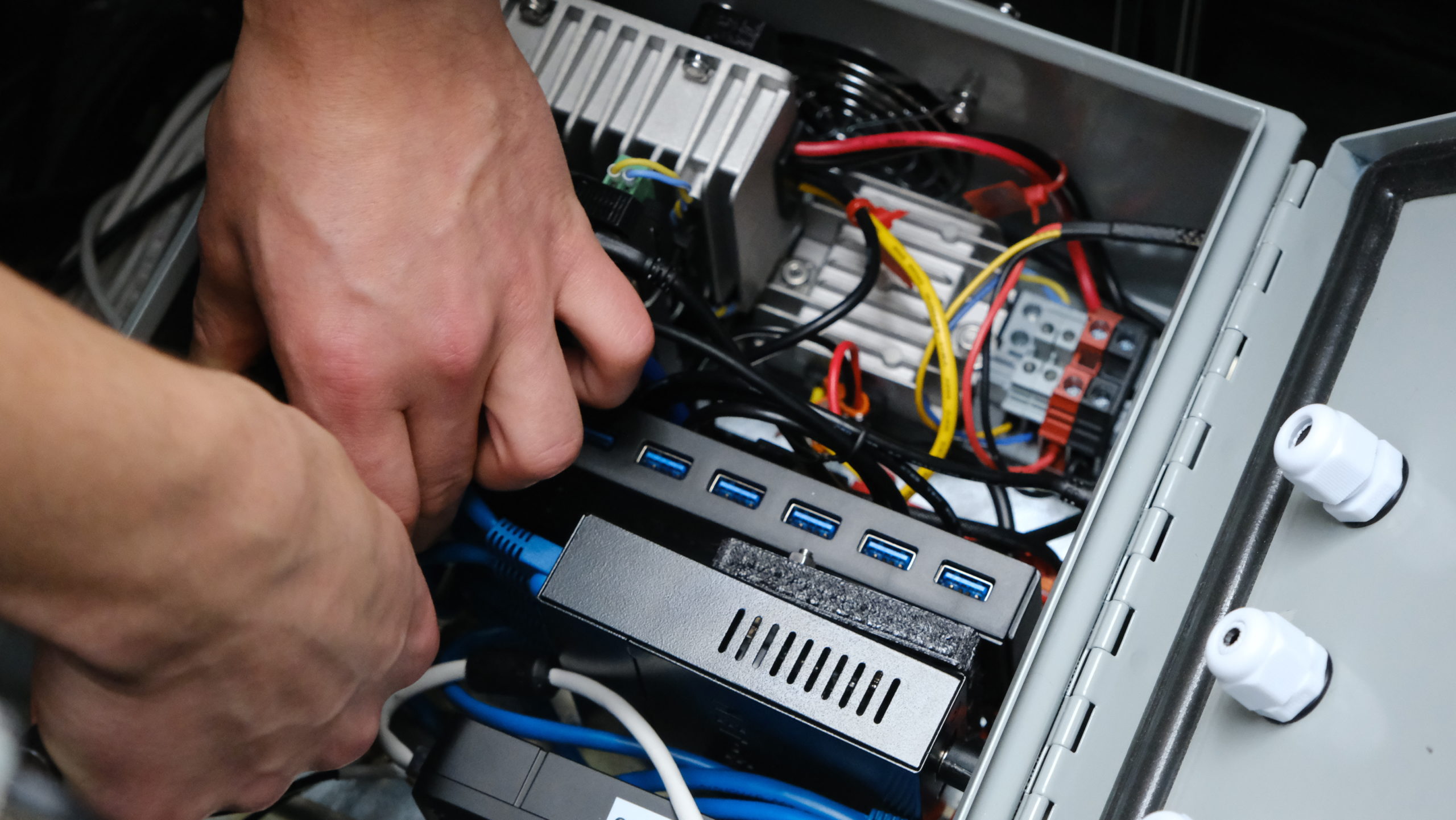
Building from scratch
Conceiving a new product or solution is, in some ways, the easy part. It’s one thing to come up with an idea, and quite something else to design, build and test a solution. But this is the kind of challenging work InDro engineers truly love, even though progress is measured in a series of small, incremental steps that ultimately add up to that giant leap.
“Engineers are very goal-oriented,” says Arron Griffiths. “So the micro-achievements keep you going. And actually, the major achievement at the end when we’ve done something – it’s kind of like relief. And that relief then allows us to celebrate.”
We asked Ahmad Tamimi – InDro’s first Area X.O hire – about working as an R&D engineer. Here’s what he said:
“Some of the things we’re building are not just niche – but really new. So we need to build things that have never been made before.”
But how do you get there? How do you go from a concept to a finished product? Very methodically, says Ahmad.
“The first step is to translate the strategic idea. Once you do that, you start decomposing the project – you break down the structures. Let’s say the end goal is XYZ. You take this and translate it into more technical terms. Technical team members will (then) really start to understand the end goal, what’s needed to be build – even the time needed, along with the budget and cost.”
All of those steps are written down in logical order, as kind of a blueprint for proceeding from beginning to end.
(That’s Ahmad, by the way, in the photo below.)
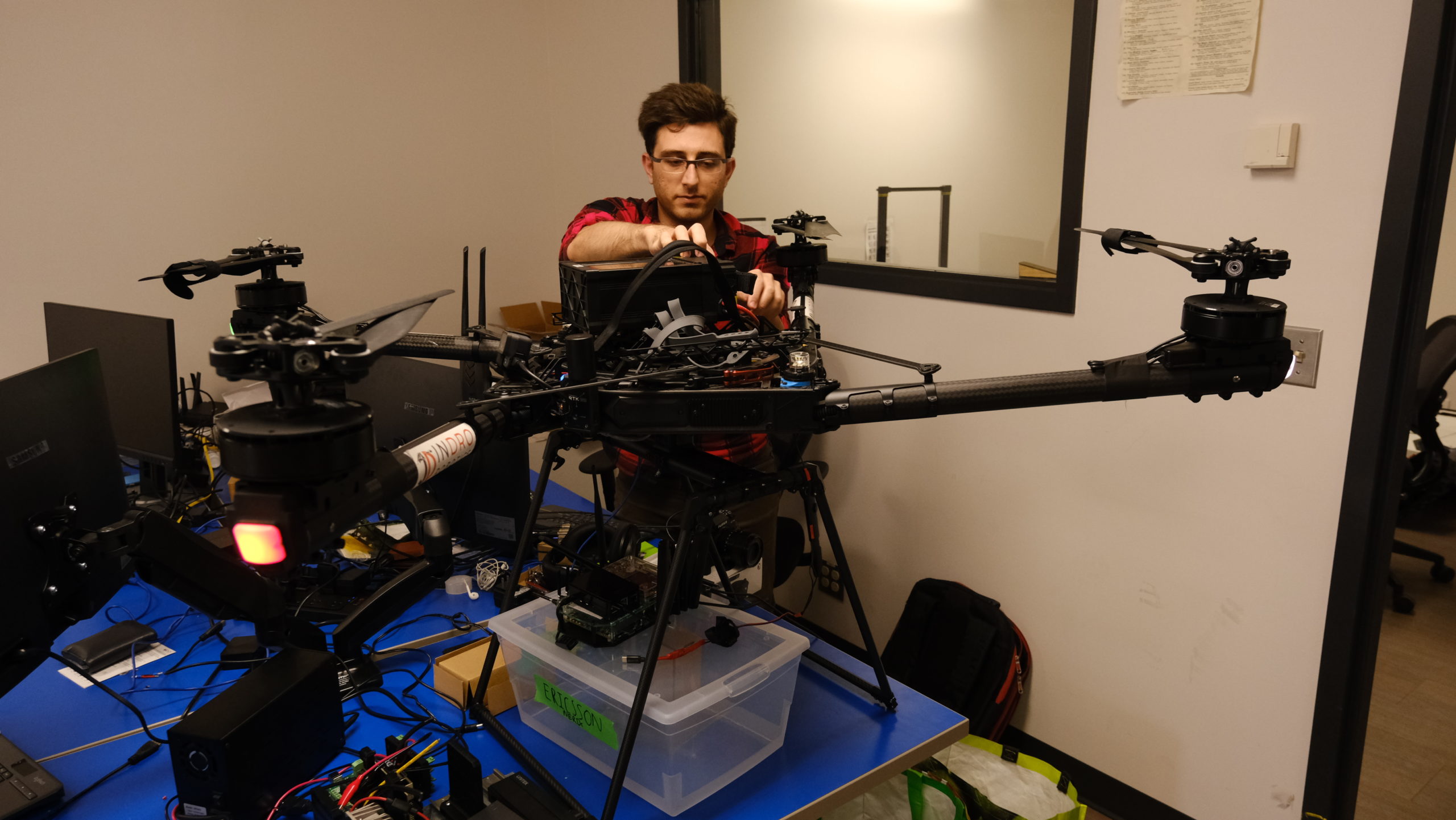
Meet the team
Though we’ve touched on a few members already, you now have significantly more context around why InDro Robotics has chosen Area X.O, and what the team is up to. So let’s introduce you to everyone who helps make that place hum.
Peter King, Head of Robotic Solutions
You’ll remember Peter – the guy who worked at Aeryon Labs and Clearpath Robotics. He’s passionate about technology, great at doing demos for clients, and firmly believes InDro Robotics is well-poised for the future.
“The industry is finally at the point now where the technology is good enough to start deploying robots in volume, at scale,” he says. “In the past it has struggled with things like low-latency communications, which has been solved with 5G technology. We’ve also seen significant progress in areas like AI and really smart autonomy.”
As the industry moves forward, Peter stresses that robotics can help solve labor issues – not create them.
“We’re not focused on replacing people’s jobs, but we are focused on re-deployment. So getting robots to do the dirty, dangerous, mundane jobs so we can get to where can focus on people doing jobs that are more efficient.”
Peter (along with BC-based CEO Philip Reece), is very much the client-facing side of InDro Robotics. He manages high-level partnerships and also plays a key role in InDro’s strategic growth plan.
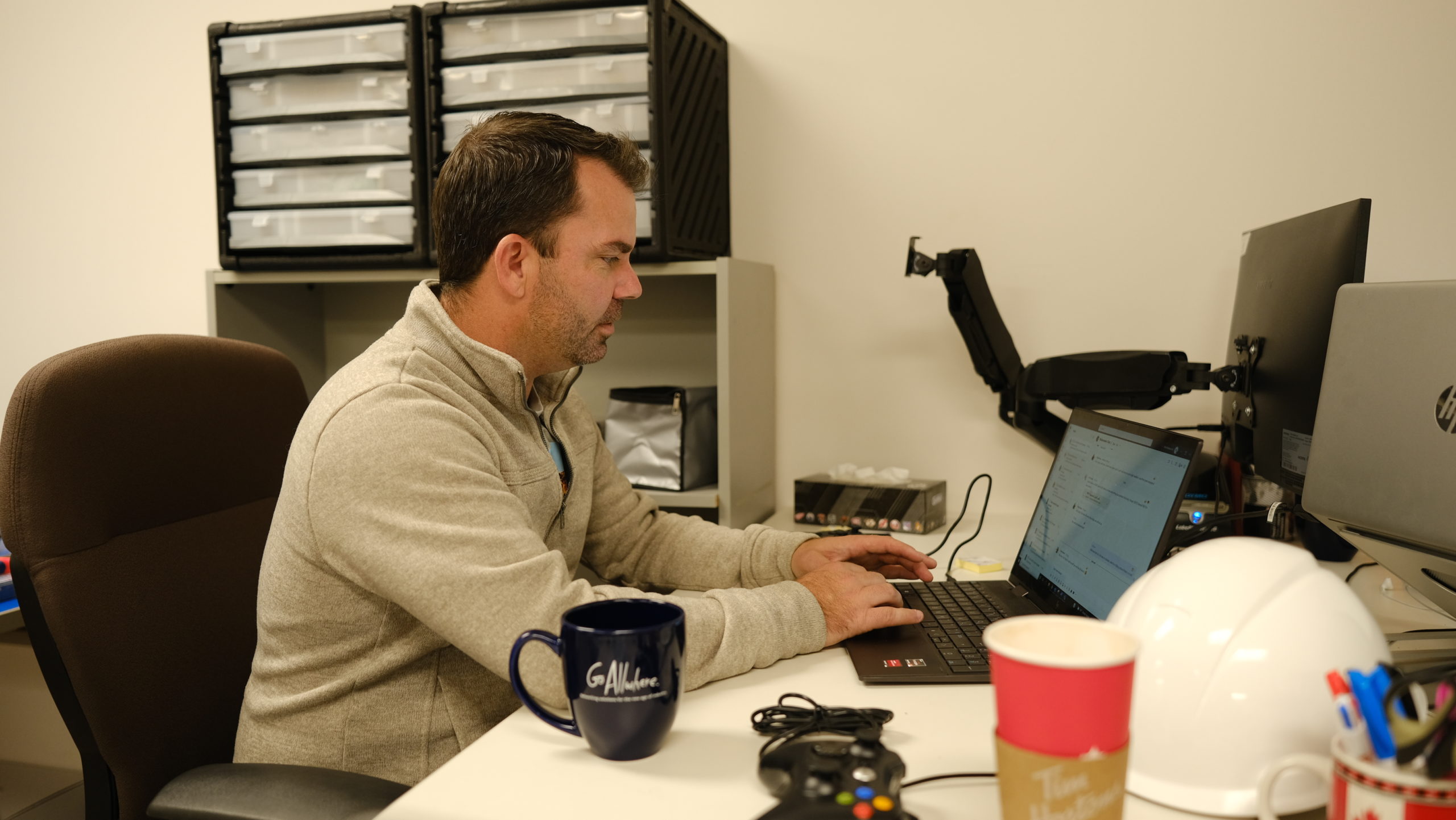
Peter works closely with another very capable person: Luke Corbeth.
Luke Corbeth, Account Executive
Luke’s university studies were split between finance and digital innovation. That’s a perfect skillset for this job, which involves understanding the needs of business clients – and being up to speed on the pointy edge of technology. (You saw Luke earlier, sitting on the left in that mobile command centre.)
Luke specializes in UAV and UGV solutions that involve infrastructure inspection or delivery.
“At a high level, the R&D team comes up with some sort of product – and often these products are useful across multiple verticals,” he says.
“My role is to identify the most promising verticals and approach them from cradle to implementation. I think we have a unique combination at InDro of technical knowledge, regulatory knowledge and resources. These three things help us stand out, and we can be faster to market with a superior product.”
(If you’re interested in learning more about those products, you can reach Luke here.)
But – and this is the perfect transition to the introduction of our Ottawa engineering staff – it’s the engineers who create those products.
“The heart of InDro Robotics is the engineers. Their goal is to make robots as accessible as possible, and they do it with cutting-edge technology.”
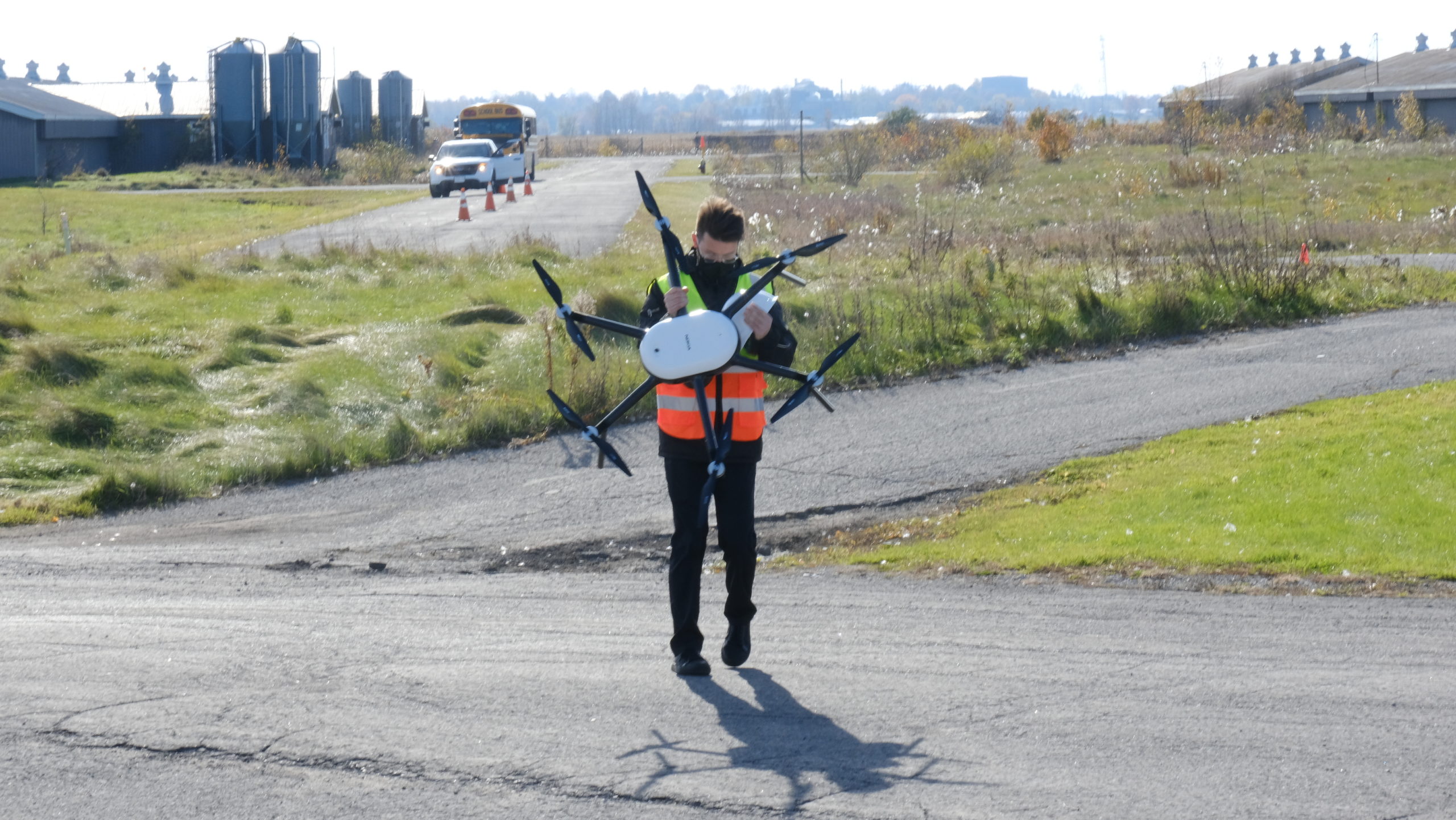
Arron Griffiths, Engineering Manager
From building robots for nuclear facility inspections in the UK through to bipedal robots, Arron has a wealth of experience designing, building and testing devices meant to solve problems. He also happens to be very good with people – a skill so important to InDro in our highly collaborative Area X.O facility. He quietly mentors younger engineers, encouraging them to pursue innovations they’re passionate about.
And he absolutely thrives in the agile environment.
“I’ve worked at universities and nuclear power stations,” he says. “They all talk the talk and want things to be real-world ready. But they never give you enough space to enable that – you always need a meeting to talk about it, to pack up, to leave. All of that is gone here (at Area X.O). You make your changes to the product quickly and then send it back out.”
Ahmad Tamimi – R&D Engineer
Ahmad was the first engineer at InDro’s Area X.O location, which meant he had the first choice of desks. It also meant, for part of the pandemic, he was the only person in the building.
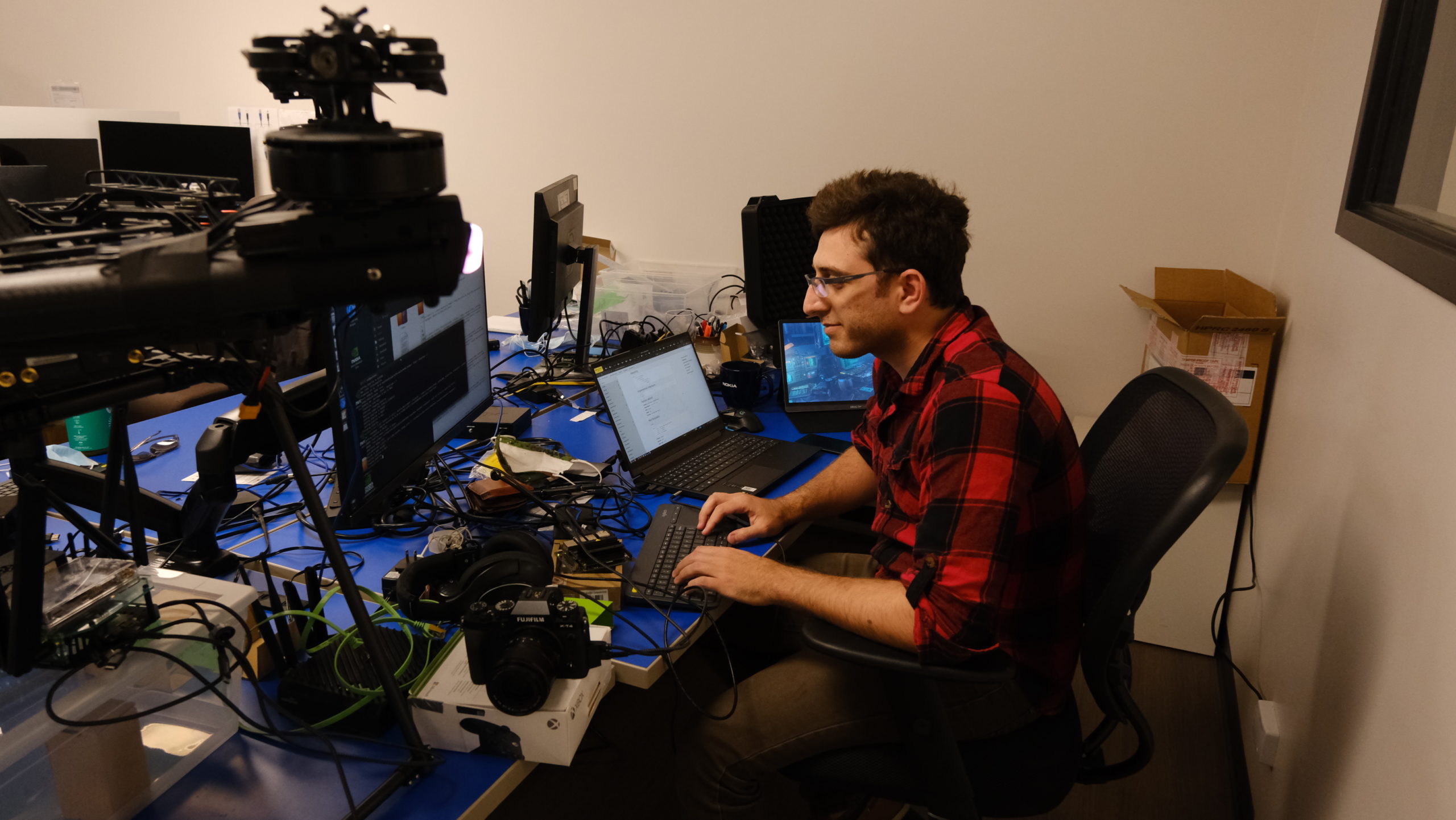
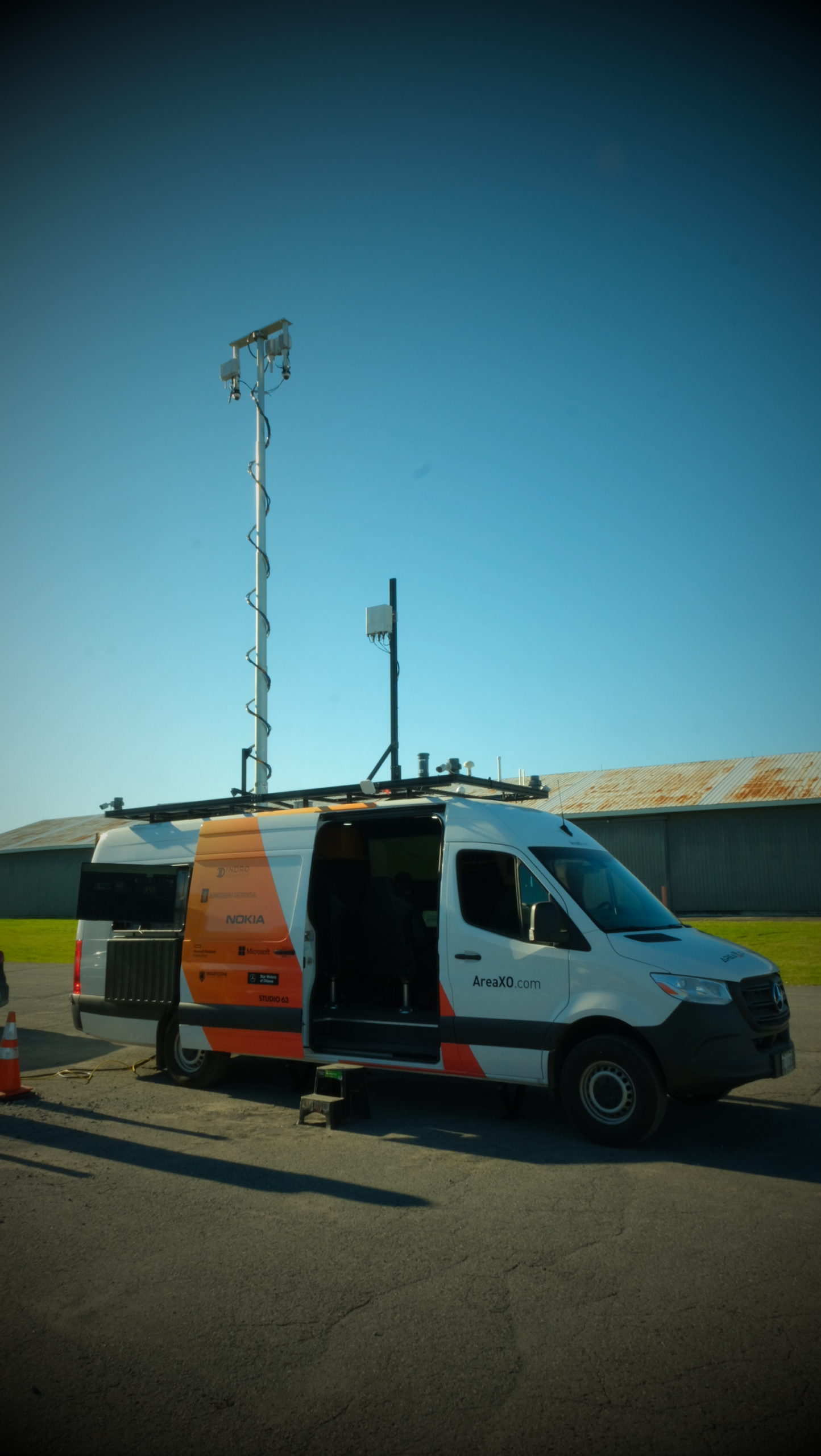
Because he was InDro’s first person on-site, Ahmad also developed a great relationship with the Area X.O managers.
Lately, he’s been kept busy with multiple projects, including working with telecom carrier Ericsson to enable ultra low-latency drone operations using the 5G network. He’s worked on ROS-IN-A-BOX, and – like Griffiths – mentors the “very talented” younger engineers who have recently come on staff.
“It’s so they don’t have to start from zero,” he explains.
Ahmad also has a background in cybersecurity and sees interesting times ahead:
“The gap between the digital and physical worlds is narrowing,” he says. “Drones are just one aspect of a growing Internet of Things universe. So I see real risks in this area – plus tremendous opportunities.”
Austin Greisman – Robotics Engineer
Prior to joining InDro, Austin worked at Ericsson – the cellular provider that is always up to interesting things in its own Skunk Works-type lab. While there, he built an LTE-enabled drone.
If you’re in the industry, you’ll be aware that drones capable of operating over cellular networks can be operated remotely – providing there’s a cellular network at both ends and you have the required regulatory permissions. It’s an area the firm has been innovating in for several years now, so Austin was already coming from a place that would be a good fit. What we didn’t know when he was hired, was how incredibly eloquent he could be when describing his passion for technology. Just have a listen to why he’s enjoyed being involved with the ROS-IN-A-BOX project:
“I like it because I love robots. It’s the beautiful harmony between hardware and software.
“It’s the beginning parts of a system that can be truly useful for a customer, where they can plop it onto a system and make it a robot that’s smart.”
Austin also believes the world is on the cusp of exponential growth of the adoption of robotics. He believes companies like InDro, by making robots more accessible to non-technical users, will play a significant role.
“It’s limited right now by barrier to entry. So by moving that barrier, I think there will be a massive explosion (of adoption),” he says.
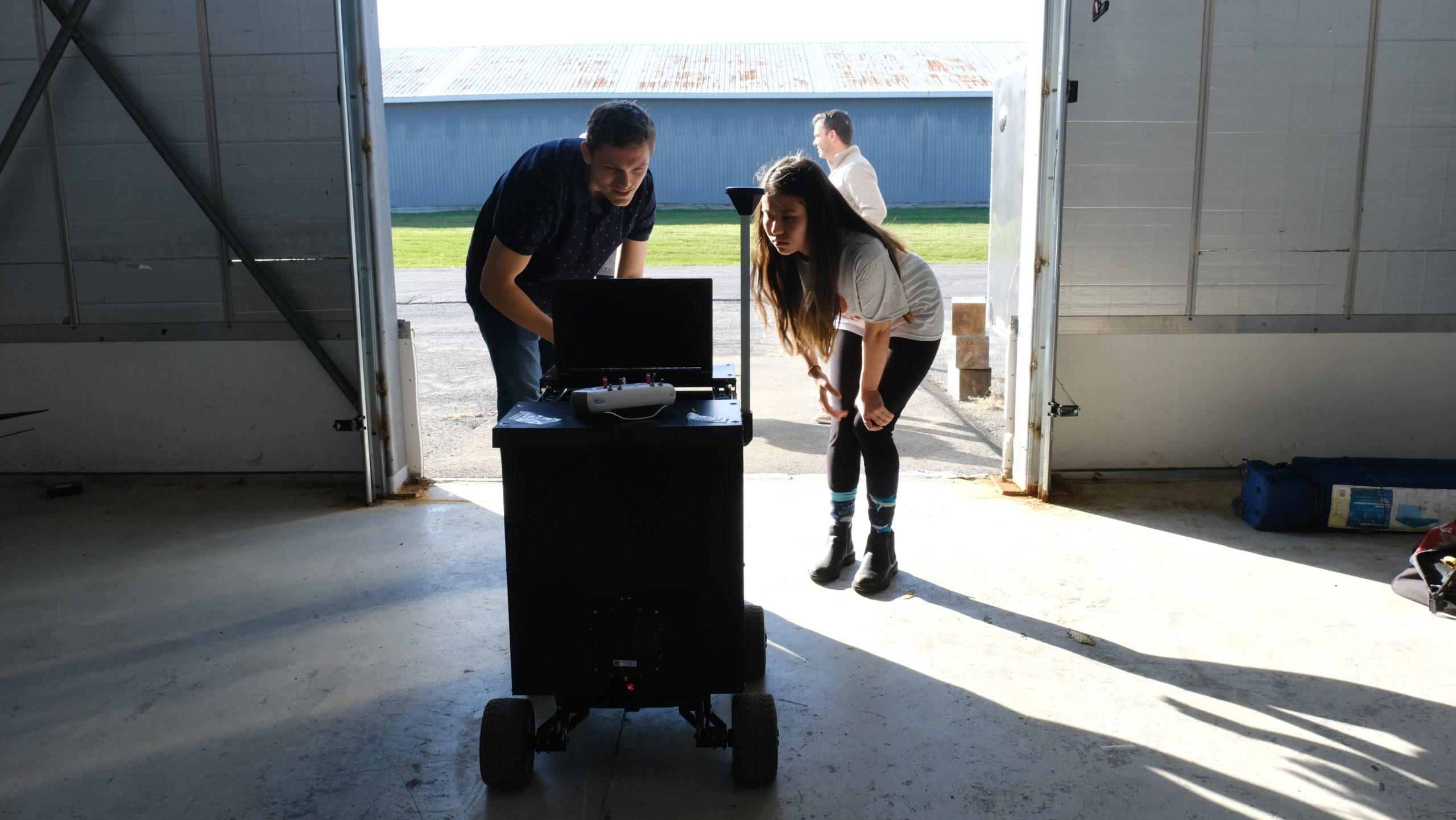
Ella Hayashi – Junior Engineer (Software)
As a student, Ella used to occasionally offer her expertise at an Ericsson project known as “The Garage.” Basically, the ‘garage’ was a spot within Ericsson where the company offered funding to internal startups. Ella got involved.
It was while helping out in The Garage that she became really interested in the Robot Operating System software, known as ROS (and half the equation in our ROS-IN-A-BOX).
With a BSc in Computer Science, Ella is working more on the software side of things. She started in October of 2021 and already is currently working on product documentation so that clients can fully understand and exploit InDro products. She’s also involved with preparing internal tutorials on Gazebo – powerful simulation software for robot building and testing – and the Robot Operating System (ROS) software.
“I like that my work allows me to learn the really cool and interesting stuff, but also my work helps other people learn as well, so it’s a great position to be in!” she says.
Ella adds one more thing:
“I love working here.”
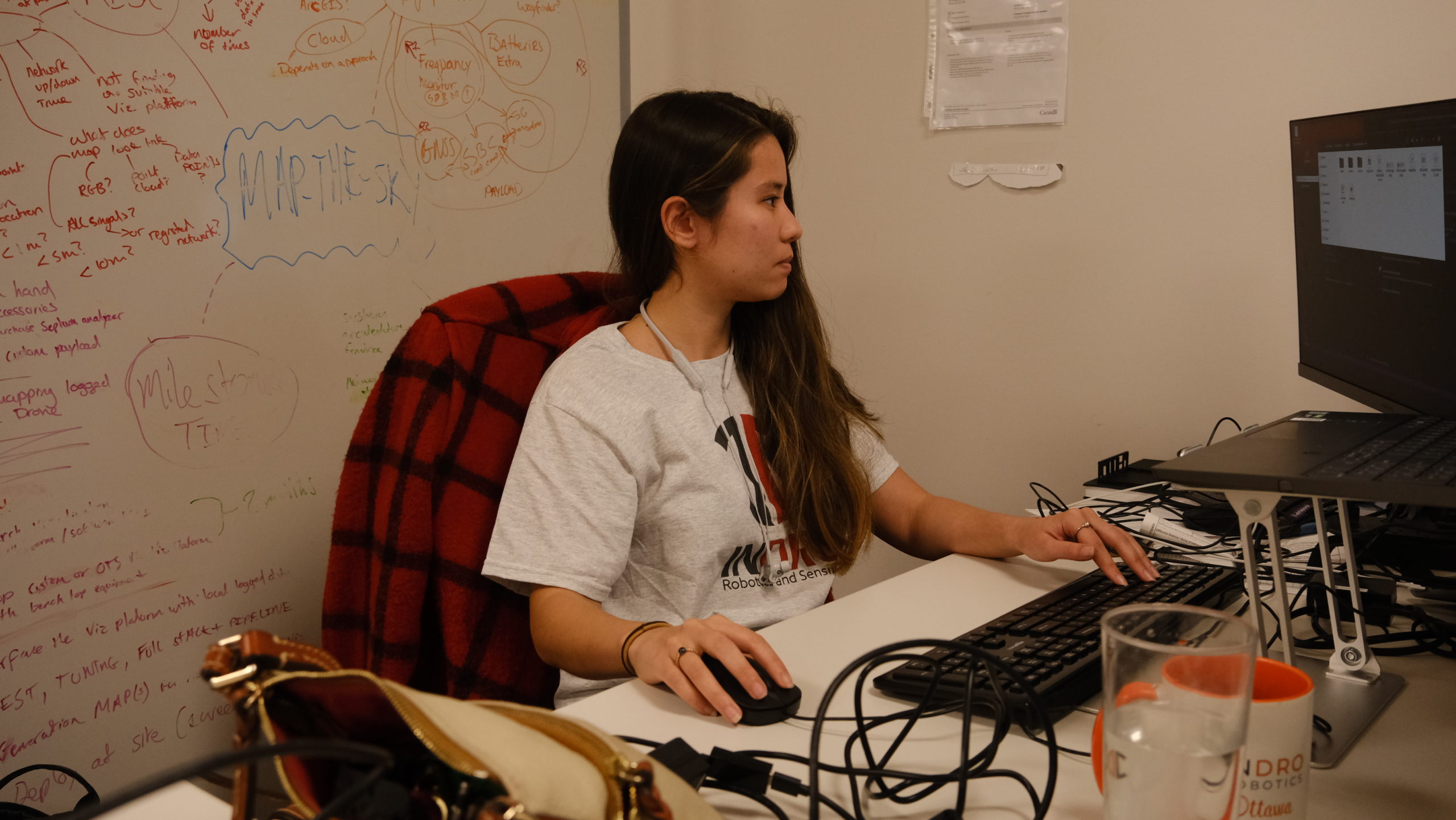
Kaiwen Xu – Systems Engineer
InDro’s most recent Area X.O hire (and there have been many this year), is Kaiwen Xu. He comes to us after a six-year stint with MicroPilot, a leading manufacturer of autopilot systems – both hardware and software. Kaiwen was involved with programming control systems for all configurations of UAVs, including standard multi-rotor designs, fixed-wing aircraft, fixed-wing VTOLs and even helicopter-style drones.
Already, Kaiwen has seen the tremendous advantages offered by the Area X.O location.
“It’s the perfect place for drone and ground vehicle development and testing,” he says.
“Most drone companies I’ve dealt with previously had to drive a long way outside the city to do a flight test. Here at Area X.O, you can take off anytime you want, and you don’t have to worry about forgetting a battery or screwdriver.” (Anyone who’s worked at a drone startup will know exactly what Kaiwen is talking about!)
Like others here, he’s fascinated by the daily intersection between hardware and software.
“Robotics is a fun industry. You write some code and flash it to the circuit board – and the robot will work as you asked it to do.”
Yes, he says, sometimes there are bugs – which can lead to frustrating hunts through endless lines of code to identify and mitigate the issue. But when that process ends with success (as it inevitably does), Kaiwen says there’s a real feeling of satisfaction.
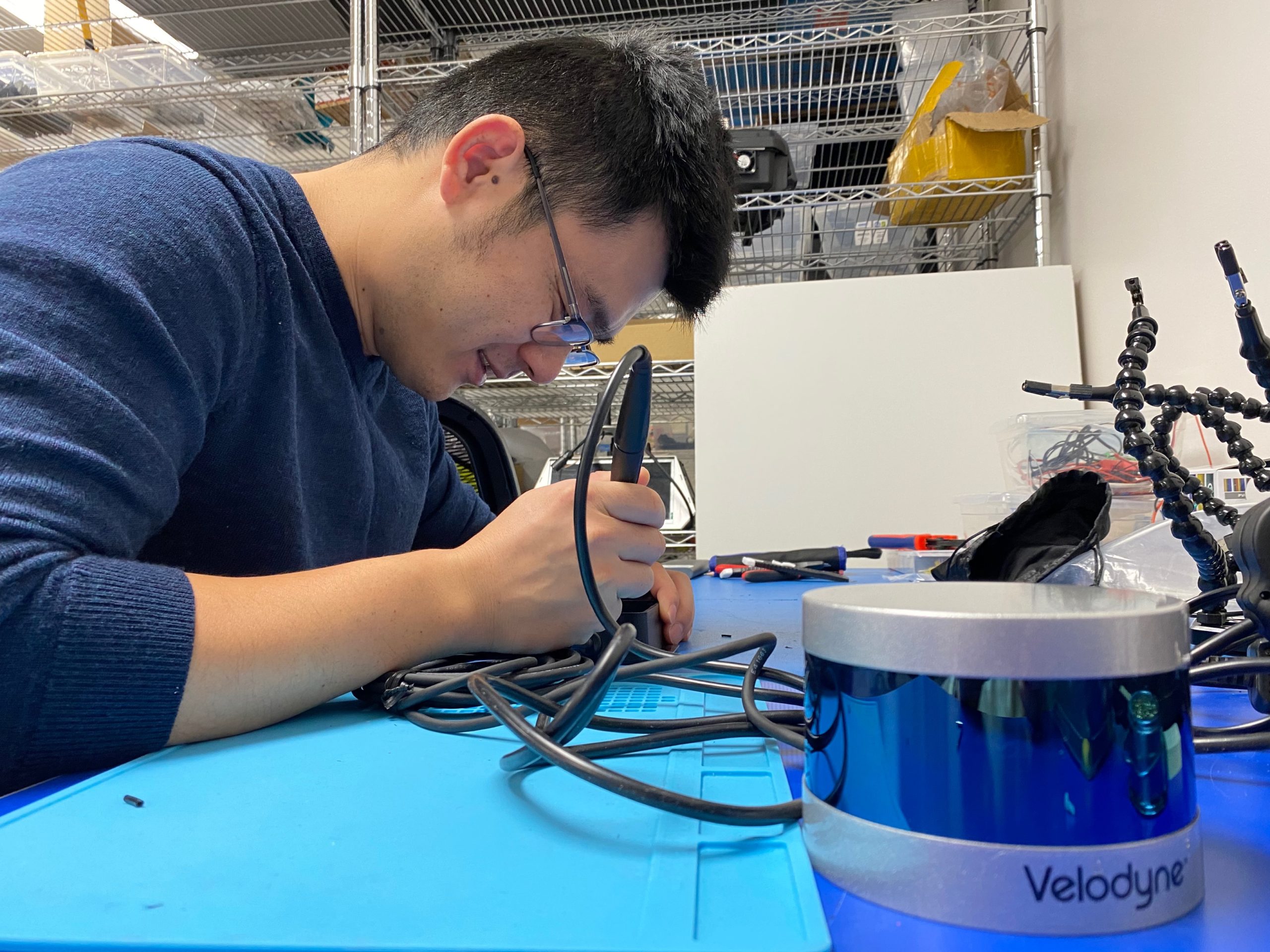
Anthony Guolla – R&D Sales/Engineer
Anthony is a rare breed: He’s both an engineer and a person on the sales side of things. We’ve saved Anthony for last because his position is both unique – and also reflects the importance InDro places on understanding its clients.
“While Luke is more focused on robots doing things, my sales side would be to deal with people building robots, rather than buying what those robots can do.”
Cool. And because he’s an engineer, he can hop in when the rest of the engineering team needs a hand. Plus, he can speak with other engineers from the client side on the same level.
“There’s a certain engineering framework or methodology, so I can tap into how they’re thinking about their product and get a sense of what they’re looking for and what they want.”
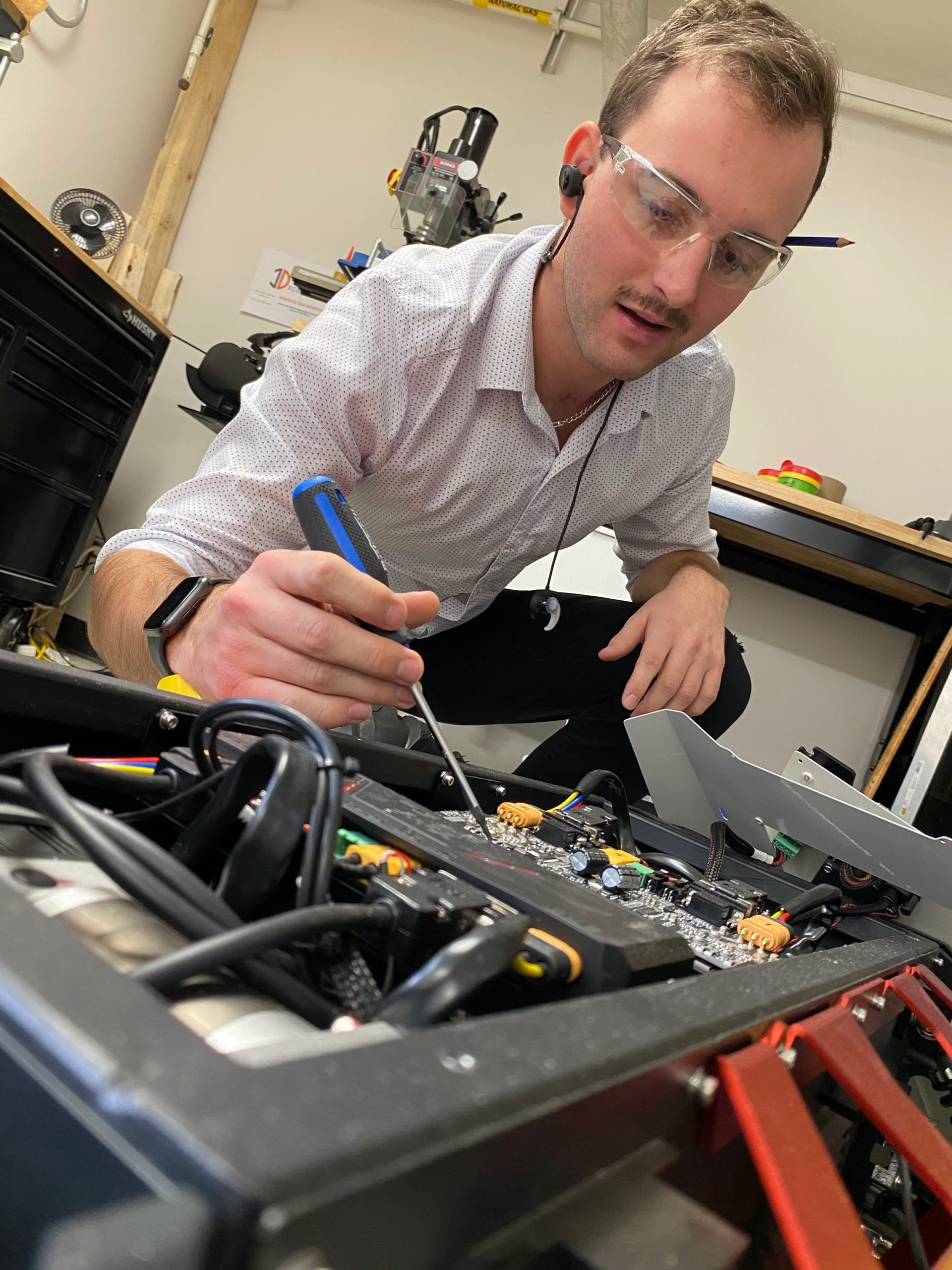
Of course, part of his job is to help potential clients understand the capabilities of the AgileX UGVs – InDro’s platform of choice for ground robotics.
“They’re very powerful, great pieces of hardware,” he says. “It’s exciting to work with them. I try, as much as possible, to get clients to do a hands-on demo. Once they have their hands on the joystick, they love it.”
Speaking of that, Anthony here echoes Ella.
“I love my job. My job’s great.”
And, as engineering lead Arron Griffiths observed earlier: Happy people work hard.
And these people do. Every single one of them.

